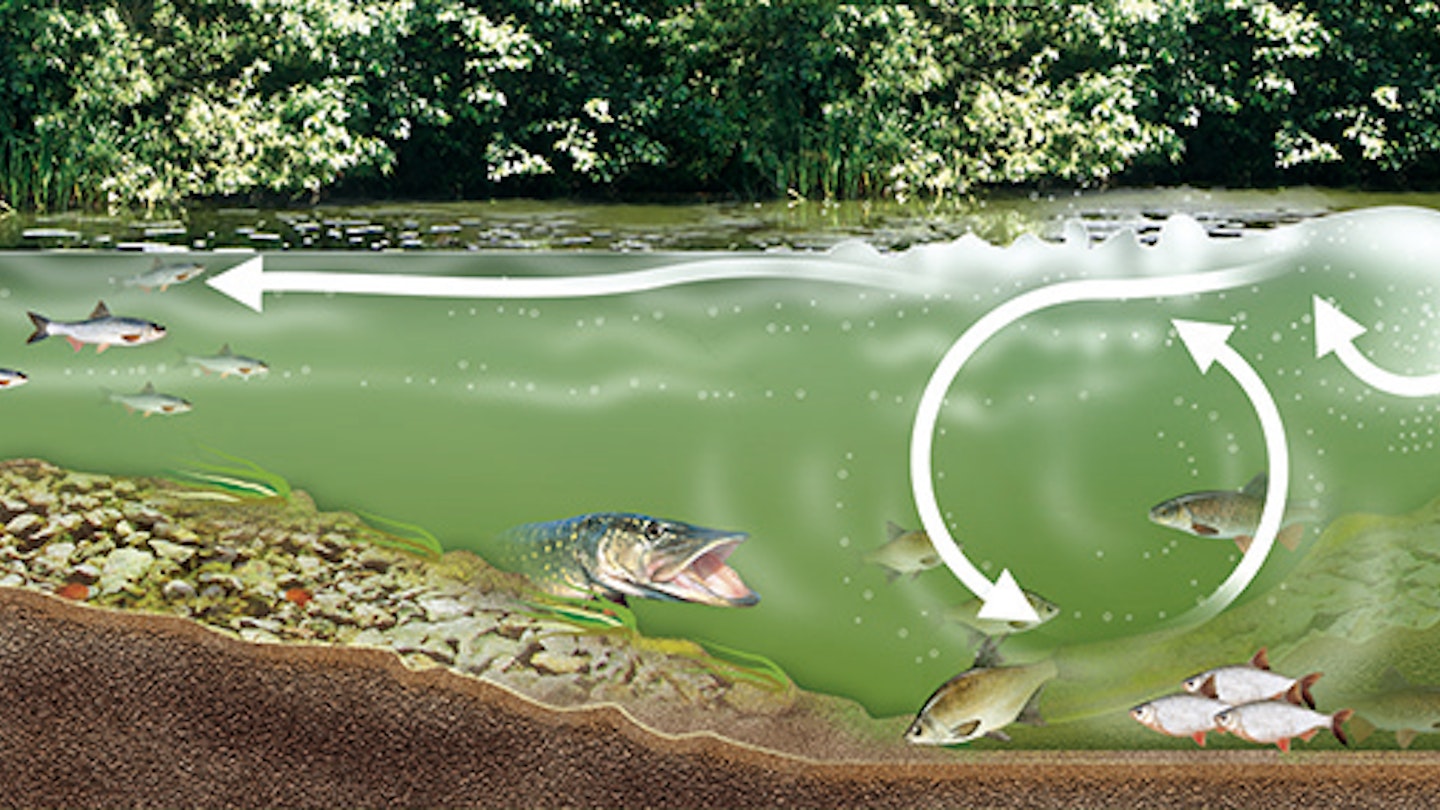If you're looking to catch an abundance of different species on a river this season then you really need to give a weir pool a try.
Weirs are a haven for a number of species thanks to the warm, oxygenated water that’s constantly being flushed through the swim. Food items naturally collect in the basins of weirs too, and there’s plenty of underwater features to create the perfect home for predatory species such as pike, perch and zander.
However, weir pools can be quite daunting for those who have never fished one before, so Angling Times is here to help. Here’s our exclusive overview of these fantastic river structures which will explain where you can expect to find each species and what tactics you can use to catch them, whatever you fish for.
DACE

dace are widespread in weir pools. They, too, thrive in shallow water much like the minnows, and can be found in numbers at the tail end of the weir. A trotted stick float or waggler with bronze maggots will find plenty of bites from these stunning fish – with the odd roach, perch and minnow too.
ROACH

Roach can be caught from most areas. In the summer they can shoal up in shallow water over the gravel at the end of the weir, but will also drift into the deep hole created by the main flow. A maggot feeder is hard to beat for a weir pool roach, but watch out for those pike, which love to snap up a hooked roach as you wind it in.
MINNOW

Those of you who have fished with maggots or pinkies on a river will have caught plenty of minnows in your time. These tiny fish thrive in shallow water with lots of gravel, and can be found relatively close to the bank at the tail end of a weir. Although regarded as an afterthought to many anglers, those looking to catch a big perch from a weir pool won’t find a better bait than a live minnow.
CHUB

chub love gravel swims and can be found in all areas of the weir pool. You’ll find you will catch a lot of chub while fishing for the barbel, but if you want to target them deliberately few things can surpass a large piece of breadflake or a whole lobworm. They will also take small lip-hooked livebaits. Chub won’t venture far from the main flow, so aim your attack here to catch a few.
BREAM

A weir pool is a great place for bream to pick up food items that have been washed downstream. They are often found in the deep holes at the bottom of the weir pool. Cast a heavy cage feeder stuffed with groundbait or liquidised bread around 5ft from the weir sill and fish flake, double corn or lobworm on the hook.
BARBEL

Barbel fishing on a weir pool has to be up there with the best fishing around. These fish love fast, oxygenated water over gravel. When you’ve leaded around and found solid gravel use a bait dropper to introduce boilies, pellets and particles. Over this fish a bomb with a big pellet or chunk of meat to catch. The undercut directly under the sill of the weir also offers a good refuge for these fish.
PERCH

Perch thrive in the snaggy features, as do the juvenile fish they eat! You can find perch under the weir sill, in shallow water and just where the gravel shelf drops off into deeper water. A chubber float with a lobworm is a superb tactic, but maggots will also catch. Big perch can be tempted on spinners, small jigs or lip-hooked livebaits.
PIKE

Wherever there’s an abundance of silverfish such as roach or dace the pike won’t be far away. They’ll often skulk at the bottom of the weir pool or on the gravel shelf, from where they can easily ambush their prey. If there are limited snags at the bottom of the weir a legered roach or lamprey section is hard to beat for a pike. Alternatively a spinner or roach-imitation lure will get a reaction.
